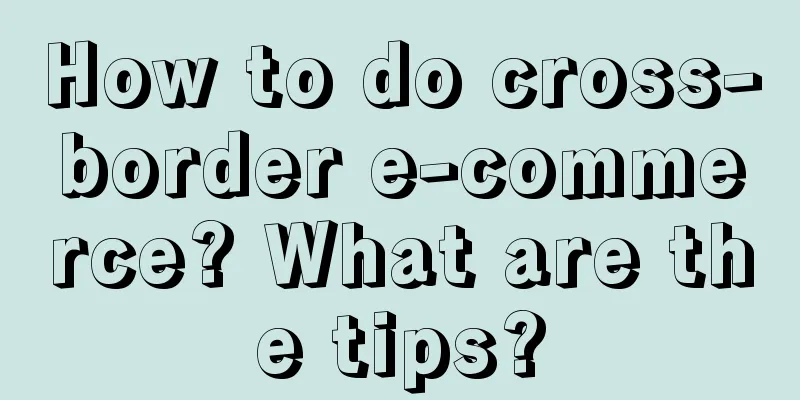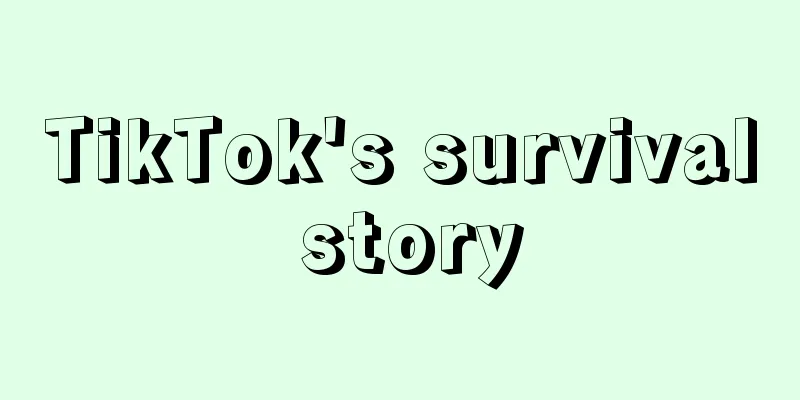Top 10 trends in marketing

2023 is almost over. How far has marketing developed? What are the new trends? Through actual practice, we have summarized the following rules: 1. Marketing has three main lines and ten major trends1. Internet thinking: growth marketing, global marketing, live streaming marketing, and borderless marketing; 2. Business thinking: narrative marketing, experience marketing, emotional marketing, delivery marketing; 3. Customer thinking: technology marketing and big health marketing. Second, let us first introduce the relevant business concepts1. Growth and MarketingMarketing is mainly about acquiring customers, with a bias towards traffic thinking; Growth is mainly about retaining customers and thinking more towards the customer. Traffic operation is oriented towards weak relationships and one-time game. Customer operations are oriented towards strong relationships and repeated games. For the Internet: Growth is operation, and operation is retail. Retail is all about details, and the devil is in the details. In other words: selling goods on the Internet does not rely on sales, but on operations. 2. Marketing and SalesSales means that merchants take the initiative to find customers; Marketing means that customers take the initiative to find merchants. Sales is consensus; Marketing is about change. Sales is cause-effect evidence-based; Marketing is driven by dreams. Sales is because seeing leads to believing; Marketing is about seeing because you believe. in other words: Marketing efforts are outside the store, and sales efforts are inside the store. so, The most important thing about marketing is not selling products; Instead, it is sales pre-position and front desk reception. 3. Marketing and contentMarketing content is to promote products with merchants as the core; Content marketing is all about spending time with customers at the core. Marketing is an expense; Content is an investment. Marketing content, after a period of time, has no value; Content marketing can still bring traffic value ten years later. 4. Strategy and MarketingMarketing is about making sales redundant; Strategy makes execution easy. 3. Ten major trends in marketing1. Growth MarketingGrowth marketing is a combination of growth and marketing. In plain words, it manages both traffic and conversion, as well as retention and customers. Can you give an example? For example: Luckin Coffee, the first order is free. This is traffic thinking, the product power has not changed, but the commodity power has increased. If it only goes this far, it is still just marketing, there is no growth. But it requires you to download its APP. At this time, in addition to caring about single traffic and conversion, it also cares about how many daily active users there are, and can it continue to reach at a low cost? Not only give birth to children, but also take care of raising children. 2. Global MarketingGlobal marketing is extremely complex, with many linkages and operational variables. When the public domain traffic dividend disappears, we need to refine our operations. First of all, in the public domain, how many types of customers or users do we have? At least four categories:
For public domain customers, if we want to manage customers, the marketing and operating costs will be too high. So we need to split it into four parts:
3. Livestream MarketingNowadays, live broadcasting (self-broadcasting and Dabo) has become a standard for brand growth. In the past, live broadcasting was simple and crude, selling products directly. Later, Dongfang Zhenxuan talked about some content other than products when selling products. In fact, live streaming that relies on content to bring goods is a strategic direction to avoid the current live streaming lowest price involution. It’s just that because the content is difficult and requires strategic determination and deep cultivation, many brands have not realized it, let alone experienced the sweetness. At present, the benefits of paid live streaming marketing are still there, and in the future it will become the norm, just like opening a store in a shopping mall. The core of live streaming marketing is to upgrade the static display of pictures and texts to interactive video display, or even small group event marketing. 4. Unbounded MarketingIn the past, we relied on specialized division of labor to improve the overall efficiency and scale of the economy. Now it is different. We must rely on cross-sector collaboration to improve the overall economic benefits and quality. For example: cross-industry marketing. This was unthinkable in the past. In the TV era, many brands presented variety show culture; now in the hobby e-commerce era, many brands present fast-moving consumer goods culture. For example: FENDI and HEYTEA. One is a luxury product, the other is a freshly brewed tea drink. They have two completely different customer groups and brand tonality, so how can they engage in cross-industry marketing together? The core of borderless marketing is that the brand’s content and emotions follow wherever the customers are. High-end customers also drink tea, so even if the brand tone and value presentation may not be consistent, we still have to go there to significantly increase the presence in non-target customer scenarios and the content penetration rate of target customers. 5. Narrative MarketingNarrative marketing refers to the construction of brand stories and content, forming a new marketing strategy and creative style. In the past, it was one-way output, atmosphere creation, and image presentation, but now it is two-way interaction, emotional stimulation, and consumer branding. For example, many dairy companies emphasize "from the farm to the table". This leads to homogeneity of not only the products, but also the contents and even the brand image. Adopting a cow changes the strategy and style of the narrative. The quality of dairy products is changed to the cows are well-fed. The brand is replaced by consumer sovereignty, as if the customer is really observing the life of a cow. The brand first promotes the concept of "buying milk is not as good as adopting a cow", and then promotes the adoption model, combined with extensive promotion and private domain acceptance, effectively avoiding homogeneous vicious competition. 6. Experience MarketingLet me say something that will upset many CEOs: products are just carriers, and customer-perceived value is the delivery target. The core of experience marketing is to reduce the imperceptible value and increase the perceptible value. Transform the imperceptible value into the perceptible value as much as possible, extract the product selling points from the perceptible value, correspond to the customer's buying points, and then sublimate to small categories and large single products, and find the memory points, communication points and decision points from social communication. For example, the driving performance of Volvo heavy trucks is a product value that is very difficult to perceive. If we simply list driving performance as four major indicators from the perspective of product selling points, and then use exquisite advertising for large-scale launch, it is conceivable that the effect will be extremely poor. Therefore, Volvo Heavy Truck invited Hollywood star Jean-Claude Van Damme to stand between two heavy trucks. As the two trucks moved backwards, he gradually did a split. This is to transform excellent driving performance into an event that customers can pay attention to, perceive, remember, and become a topic of social discussion. This event can also be re-created. Because most people think that this video is processed by a computer, the brand will release a behind-the-scenes revelation to prove that the video is a real shot. Obviously, this kind of experience marketing has a strong social mobilization power. It can turn an ordinary product selling point into a social event that causes a public outburst in a short period of time. 7. Emotional MarketingEmotional marketing has become a major tool after product homogeneity, content homogeneity, and brand convergence. We often say: What sells well in hamburgers is not the hamburgers, but the parent-child relationship. This refers to emotional marketing. Uber is not doing its job properly and often organizes some inexplicable marketing activities, which are actually stirring up the emotions of target customers and fan users. Even Victoria's Secret, which is known for its sexy style, has begun to lower its profile and emphasize feminism. Why? In recent years, the lingerie industry has been driven by feminism and self-pleasing, and it is no longer a simple emotional value. Currently, the distribution of influencers on Douyin and Kuaishou is often dominated by emotional values such as the lowest price and high commission. This just shows that many brands are still at a low level in terms of emotional value mining and there is still a lot of room for improvement. 8. Delivery MarketingMany people say that products are the most important, so products are the most important. According to this thinking, the most important thing we deliver to customers is the product. Let's change our thinking: products are to meet customer needs, and brands are to connect with customers' emotions. In this way, it seems that what we deliver is not just products, but more. For example, a Michelin three-star restaurant is not doing its job, but creating a restaurant selection for content-based quality life. What is this delivery? For example, Dianping has become China's largest online catering traffic portal and customer reputation database. What is this delivery? For example: In the early years of Zhen Gongfu, it said that foreign fast food was "fried", but it was "steamed". It was to provide a healthier breakfast for the next generation of Chinese children, which aroused social public opinion. What is this delivery? Gradually, we found that the results delivered by an enterprise may have many dimensions, such as product value, customer value, business value, capital market value, social value, etc. The higher and deeper the dimension, the easier it is to establish a competitive advantage in the business model and the easier it is to jump out of product price competition. 9. Technology MarketingTechnological progress has been so rapid in recent years that everyone is eager to get close to technology and enjoy the benefits it brings. Therefore, technology marketing is no longer just about promoting and explaining product features and technologies. Technology marketing is a promise and threshold for a better quality of life in the future. Tesla is not the only one that has made automobiles a leader by relying on hard technology. Now even fast-moving consumer goods such as food and beverages have to rely on technology to stand out. On the contrary, small household appliances and other products that used to focus on technology are now beginning to be influenced by the Internet. There are many high-tech products with technical barriers that have poor marketing effects. The main reason is that they are too product-oriented and not good at converting product selling points into customer buying points. Again, customers don’t need your product; they need a solution to their problem. Therefore, when marketing technology products, we must pay attention to the following: marketing is not about selling goods, but about solving customer problems, especially solving customer pain points in a certain scenario. The scenario is the medium between products and needs. This is something that many technology companies are seriously lacking. 10. Big Health MarketingThere are more and more middle-aged and elderly people among us. We have money and more free time, and our awareness of health and exercise is much higher than that of previous middle-aged and elderly people. Including young people, cosmetics and health products have begun to focus on anti-aging. The core of big health marketing is the party of ingredients, the party of formula, the party of scene, and the party of efficacy. The whole society conspires to deepen and thoroughly explore the commercial concepts such as probiotics, hyaluronic acid, multi-titanium, dietary fiber, low sugar, low fat and low calories, forming a band-explosive scope economy. We face many uncertainties in the next decade, and big health marketing is one of the few foreseeable certainties. Big health is not just about nourishment and nutrition, it covers a very wide range, including home, clothing, psychology, lifestyle, etc., covering almost every aspect of consumption. At this point, many interesting topics are raised for us: for example, many tonic products have categories but no brands; many nutritional supplements have raw materials but no finished product value; many high-end raw materials have no excess premium at the terminal; many customers are not willing to pay for many healthy lifestyles, and so on. It is also important to remind you that in the big health marketing, we must pay attention to the purchasing power and traffic dividends of the middle-aged and elderly people in the video account. IV. SummaryWe have summarized the top ten trends in marketing along three dimensions: 1. The essence of Internet thinking is brand networking and channel networking. 2. The essence of business thinking is to strengthen customer attention, physical sensation and word-of-mouth communication. 3. Customer thinking is essentially an educational path with relatively low customer cognitive costs. Marketing is a systematic, multivariate, long-term asset. Good marketing makes sales redundant. A good marketing strategy will make marketing actions simple. One more sentence: Fast is not necessarily good; And good must be fast. Author: Cao Sheng; Official Account: Grayscale Cognitive Society |
<<: Can the 9.9-point Snow King animation help Mixue Ice City fight for another hundred years?
Recommend
Can I run ads on Facebook Mall accounts? How do I pay?
Facebook Mall is a kind of social cross-border e-c...
Xiaomi SU7, why is it so popular?
With its unique product positioning, user-friendly...
Cloud booking, adding seats, charging for concerts, a new "leek-cutting" show is coming?
Why are there still consumers willing to pay for &...
How to promote Wish platform? Introduction to promotion methods
The order placement speed of the Wish platform is ...
What is the order processing procedure of Wish? How to ship?
If merchants open a store on Wish, they need to un...
Apple AI: Not many surprises, but it set an example for Android phones
Although Apple does not have many technological in...
Cadillac's new car pre-release poster sparks controversy: Coconut tree style mocked by netizens
Recently, Cadillac's official account used a s...
What does an Alibaba International Station account manager do? What should operations do?
As we all know, Alibaba International Station has ...
Follow-up analysis of Dong Yuhui’s “short essay scandal”: After the crisis subsides, where should Oriental Selection go?
The "Little Composition" incident of Ori...
How to retrieve Shopee main account? How to do it?
Now many entrepreneurs have joined the cross-borde...
This is how to build a data indicator system, not just memorize AARRR
This article will explore in depth how to build a ...
Switching to Xiaohongshu as a buyer is becoming a new trend
This article mainly talks about the buyer phenomen...
No longer competing on low prices? Douyin e-commerce starts playing the "high-end card"
Recently, the female star Aya and her bestie Zhou ...
Can I return an item after 90 days of purchase on Amazon? Can I return an item after it has been unpacked?
If you purchase goods on Amazon's cross-border...
Explaining the McKinsey Method: Techniques for Structured Analysis Problems
When solving problems, we often hear the term &quo...









